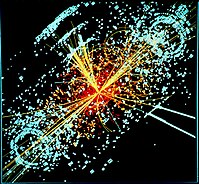Causal dynamical triangulation

Imagine you are playing with a new kind of legos that can build a special type of structure. These legos have a few rules, though. They can only connect in three dimensions, that means, up and down, left and right, and front and back. They also can only connect to other legos in a specific way that follows a set pattern.
Now imagine you have a bunch of these lego structures built in different ways, how can you compare them to understand their similarities and differences?
That is where causal dynamical triangulation comes in, it is like a tool we can use to compare and analyze different lego structures, but instead of legos, we are talking about the universe!
To build these "universe legos" we use a process called triangulation. Triangulation breaks up a space into smaller, simpler pieces (like legos) and then builds up the structure from those pieces.
But how does this help us understand the universe? Well, by using causal dynamical triangulation, we can compare different structures of spacetime, and how they may or may not fit together. We can see how space and time are connected and how they affect each other.
Think of it like building a house, by using different types of bricks and building methods, we can make vastly different structures. But by analyzing those structures, we can see what works and what doesn't, and create better structures in the future.
Causal dynamical triangulation works in a similar way, by analyzing different ways to build our universe, we can gain a better understanding of how it works, what changes over time and what stays constant. This information can help us better understand everything from the big bang to black holes, and even the nature of time itself!
Now imagine you have a bunch of these lego structures built in different ways, how can you compare them to understand their similarities and differences?
That is where causal dynamical triangulation comes in, it is like a tool we can use to compare and analyze different lego structures, but instead of legos, we are talking about the universe!
To build these "universe legos" we use a process called triangulation. Triangulation breaks up a space into smaller, simpler pieces (like legos) and then builds up the structure from those pieces.
But how does this help us understand the universe? Well, by using causal dynamical triangulation, we can compare different structures of spacetime, and how they may or may not fit together. We can see how space and time are connected and how they affect each other.
Think of it like building a house, by using different types of bricks and building methods, we can make vastly different structures. But by analyzing those structures, we can see what works and what doesn't, and create better structures in the future.
Causal dynamical triangulation works in a similar way, by analyzing different ways to build our universe, we can gain a better understanding of how it works, what changes over time and what stays constant. This information can help us better understand everything from the big bang to black holes, and even the nature of time itself!
Related topics others have asked about:
